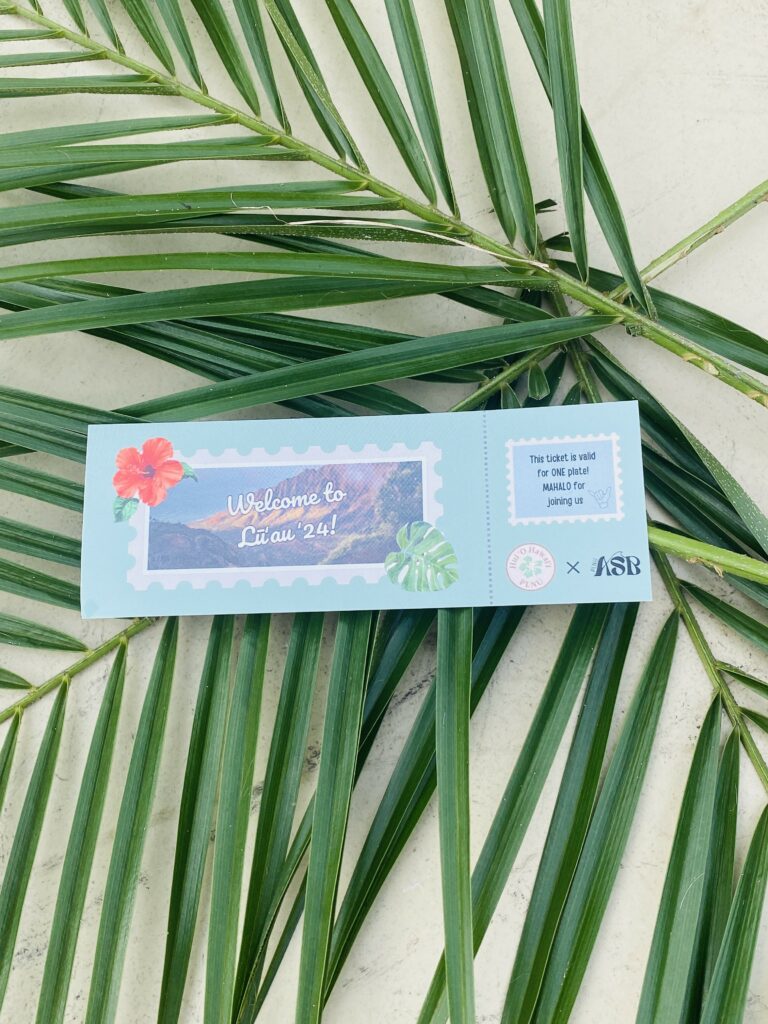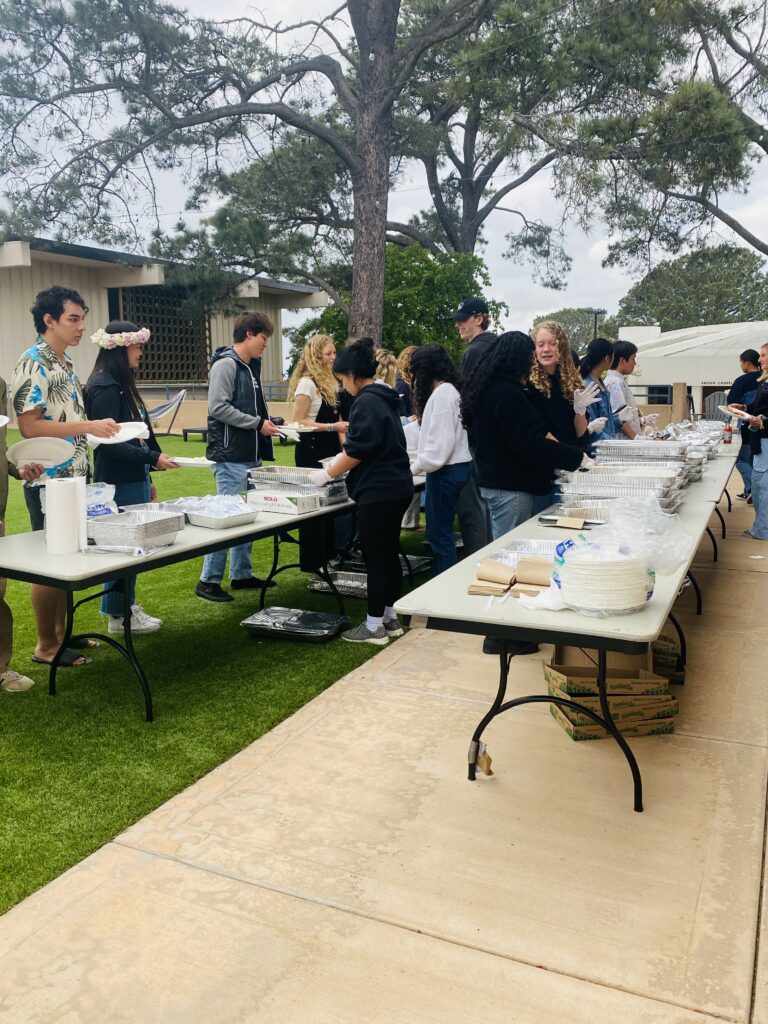The Hui ‘O Hawai’i club collaborated with Point Loma Nazarene University’s Associated Student Body (ASB) to host their annual Lūʻau on Friday, April 12 from 5-8 p.m. on the Ryan Plaza Deck.
The event began with Hui ‘O Hawai’i members serving students traditional Hawaiian food including fish, chicken katsu, white rice, kalua pork, butter mochi, apples with Li Hing Mui powder and juice drinks. Students were encouraged to make their way through an array of dinner tables set up on Cunningham Lawn. The tables were adorned with flowers and palm leaves for decoration.
Later in the evening, four sets of professional hula dancers performed alongside Hawaiian melodies for students to enjoy. Afterward, students were invited to watch and participate in various interactive Hawaiian games. To end the night, three Hui ‘O Hawai’i members performed hula dances for attending students.
According to Caitlin Arakaki, a fourth-year kinesiology major who serves as the Hui ‘O Hawai’i club president, the Lūʻau has been a traditional event for the club for quite some time. The event was continued this year to educate and promote authentic Hawaiian culture to PLNU students. She explained the importance of food in Hawaiian culture, which is part of the reasoning behind the event.

“[This event] is capturing the main aspects of [Hawaiian] practices, and being able to showcase that is really special,” Arakaki said.
Arakaki said the Lūʻau focuses on traditional aspects of the culture as well as local favorites that would be found in Hawaii. She states that people tend to have misconceptions about Hawaiian culture, oftentimes generalizing it. From her perspective, there is a gap between what people think the culture is and what it actually is. The Lūʻau is helping to close that gap and create a better understanding of the reality of the culture.
“It’s really hard when we are minorities on campus, so being able to showcase that schoolwide is amazing. [It helps] shed more light for other minority groups on campus. People coming to the Lūʻau might think other cultural events are cool like this,” Arakaki said.
Arakaki said that, from her experience of being Native Hawaiian, having the opportunity to display her culture with other people is incredibly special to herself and others. She said that the practices shown at the Lūʻau radiate the essence of Hawaiian culture and hopes students could have a better appreciation for the culture after attending the Lūʻau.
“I know a lot of students travel to Hawaii just for the sights, but don’t actually realize there are people there and a culture,” Arakaki said.
Alexandra Fransen, a second-year early childhood and adolescent development major, attended the event and said she was able to recognize the beauty of the culture.
“I learned that hula dances are very pretty and elegant. I also gained insight on how diverse the food is,” Fransen said.
Grace Chaves, a first-year multimedia journalism major, attended the event and said she learned a lot about the culture and cuisine of Hawaii. She said that, through the interactive games, she learned a lot about the Hawaiian language and heritage.
“After this event, I realized that there are a lot of things about Hawaiian culture that I didn’t know about previously – their incredible food being one of them. I’d definitely be more interested in learning more about their culture and maybe even learning their recipes so I can bring these dishes back home with me,” Chaves said.

According to Chaves, the most memorable event of the night was the games, especially one game in particular called the “chee-hoo contest” where students tried to give their best “chee-hoo” yell. She said this was very humorous and it brought a lot of energy to the crowd of attending students. She also stated that the hula dancing was beautiful and the dancers were incredibly talented.
Milla Kuiper, a second-year writing major, attended the event and noted how amazing it was that there were young hula dancers who performed at the event because she viewed it as an act of passing on the Hawaiian traditions to a newer generation. She said she wished she could continue the practices from her own culture from that young of an age and that she appreciated that the club put their cultural traditions on full display.
“[The Hui ‘O Hawai’i club] seems happy to share their food and culture, and they seem very proud of it,” Kuiper said.
According to Kuiper, she has been interested in Hawaiian culture since she was young, and has always been eager to see their practices come to life, especially hula dancing. Seeing the culture for herself has made her curious about the art of hula dancing, particularly how it might be catering to the lens of tourism rather than authentic practices. It has made her motivated to do deeper research into Hawaiian culture as a whole.
